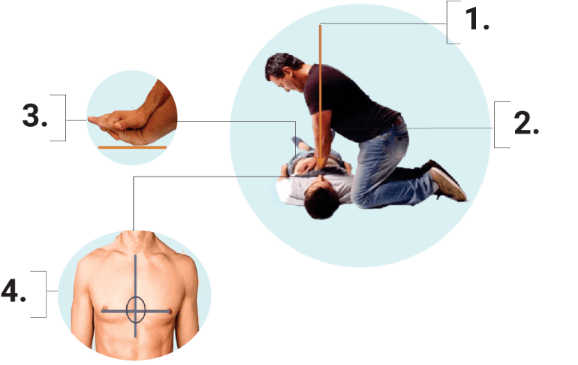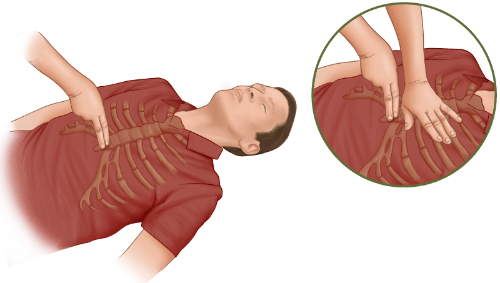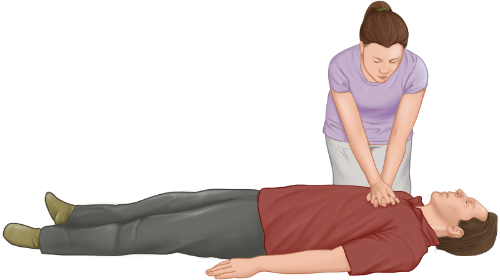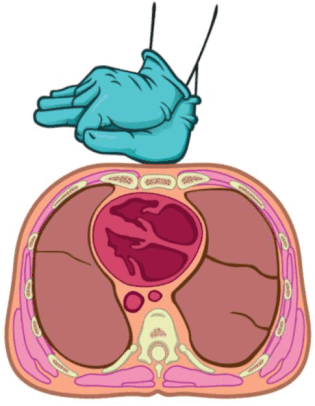3.2 C – Chest Compressions
Compression Rate and Ratio
Chest compressions are the highest priority in Basic Life Support. The recommended compression rate for all age groups—adults, children, and infants—is 100 to 120 compressions per minute.
The standard compression-to-ventilation ratio for a single rescuer is 30:2 across all ages. In two-rescuer CPR, the ratio for infants and children changes to 15:2, but adults remain at 30:2 regardless of the number of rescuers.
High-Quality Compression Guidelines
- Compression rate: 100–120 per minute
- Compression depth: At least 2 inches (5 cm)
- Allow the chest to fully recoil after each compression
- Minimize interruptions to maintain effective perfusion
Note: Do not move the victim unless absolutely necessary—such as if they are face down, in immediate danger, or on an unstable surface like a bed or couch.
Performing Chest Compressions
×
Performing Chest Compressions
 © FAW Training Solutions – All rights reserved
© FAW Training Solutions – All rights reserved
×

Performing Chest Compressions

© FAW Training Solutions – All rights reserved
Steps for Performing Chest Compressions
- Position the victim: Ensure the person is lying face up on a firm, flat surface.
- Position yourself: Stand or kneel beside the victim's chest.
- Place your hands:
-
Hand Placement
Place the heel of one hand on the lower half of the sternum (center of the chest).×Hand Placement
 © FAW Training Solutions – All rights reserved
© FAW Training Solutions – All rights reserved - Place your other hand on top and interlock your fingers.
-
Body Positioning
Keep your arms straight with shoulders directly over your hands.×Body Positioning
 © FAW Training Solutions – All rights reserved
© FAW Training Solutions – All rights reserved
-
Hand Placement
- Deliver compressions:
-
Push Hard and Fast
Press hard and fast—at least 2 inches deep at a rate of 100–120/minute.×Push Hard and Fast
 © FAW Training Solutions – All rights reserved
© FAW Training Solutions – All rights reserved - Use straight downward force; avoid leaning between compressions.
- Allow the chest to recoil completely between each compression.
-
Push Hard and Fast
